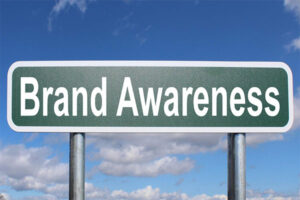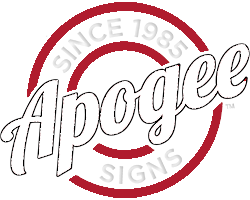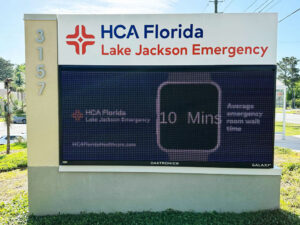Signage is a critical component of any business’s marketing strategy. A well-designed and strategically placed sign can effectively attract customers, create brand visibility, and communicate essential information about your business. However, choosing the right signage for your business location requires careful consideration and attention to detail. Unfortunately, many business owners often make critical mistakes that can undermine the effectiveness of their signage and hinder their business’s growth potential.
In this article, we will explore the top five mistakes that business owners commonly make when selecting signage for their business location. By understanding these pitfalls and learning how to avoid them, you can make informed decisions that will enhance the impact of your signage, increase customer engagement, and ultimately contribute to the success of your business.
Lack of Clear Visibility:
One of the most common mistakes business owners make is underestimating the importance of visibility. If your sign cannot be easily seen from a distance or obstructed by surrounding elements, it fails to fulfill its primary purpose. Whether it’s poor font choice, inadequate lighting, or inappropriate color contrast, compromising visibility can significantly impact foot traffic and potential customers. Business owners must prioritize a signage design that ensures clear visibility from different angles and distances, considering factors such as font size, color scheme, and lighting options.
To address this issue, start by selecting an appropriate font size that is large enough to be legible from a distance. High-contrast color combinations, such as dark text on a light background or vice versa, help enhance visibility. Additionally, consider incorporating proper lighting solutions such as spotlights, backlighting, or illuminated lettering, especially for signs displayed during low-light conditions or at night.

Neglecting Brand Consistency:
Another mistake businesses often make is not aligning their signage with their brand identity. Your signage should reflect your brand’s personality, values, and aesthetics. A lack of consistency can confuse potential customers and dilute your brand image. Ensure that the design, color scheme, and typography of your signage are in line with your brand guidelines. Consistency across all marketing channels, including your signage, creates a strong brand presence and helps customers recognize and remember your business.
To overcome this mistake, incorporate elements from your existing brand guidelines into your signage design. Use consistent colors that align with your brand palette, choose typography that matches your brand’s tone, and maintain a cohesive design style. By doing so, you reinforce your brand identity and establish a strong visual connection between your signage and your business.
Overcomplicating the Design:
To stand out, some business owners fall into the trap of overcomplicating their signage design. Remember, simplicity is key when it comes to effective signage. A cluttered sign with excessive information can overwhelm viewers and make it difficult for them to understand your message immediately. Keep the design clean, uncluttered, and focused on the essential elements such as your business name, logo, and key information like contact details or a brief tagline. A simple and visually appealing design will be more memorable and effective.
To avoid this mistake, prioritize a minimalist approach to your signage design. Focus on the key elements that convey your message and avoid overcrowding the sign with unnecessary information. Emphasize your business name, logo, and essential contact details. By streamlining the design, you ensure that viewers can quickly comprehend your message and remember your brand.
Poor Placement and Size:
Signage placement and size are crucial factors that significantly impact its effectiveness. Placing your sign in an inconspicuous location or at an inappropriate height can make it easy to miss for potential customers. Additionally, inadequate sizing can make your sign illegible from a distance. Before installing signage, consider factors such as the surroundings, traffic flow, and viewing angles. Ensure your sign is placed at an optimal height and in a location where it can be easily noticed and read by passing pedestrians or motorists.
To address this mistake, conduct a thorough evaluation of your business location. Take into account the visibility of your signage from different angles and distances. Consider the traffic patterns and the viewing angles of potential customers. Place your signage in a prominent location where it can attract attention and be easily seen. For storefront signs, ensure they are positioned at eye level and not obstructed by other objects or signage. If your business is located on a busy street, consider placing signs that are visible in multiple directions.
In addition to placement, the size of your signage is critical. A sign that is too small will be difficult to read from a distance, while an oversized sign may overpower the surrounding area or violate local regulations. Consider the viewing distance and select an appropriate size that allows for clear legibility. Larger signs are suitable for roadside or highway locations, while smaller signs can be effective for close-range viewing. Carefully balance the size of your signage with the available space to ensure optimal impact.
 Failure to Consider Local Regulations:
Failure to Consider Local Regulations:
Business owners often overlook local regulations and permit requirements when installing signage, which can lead to legal complications and costly penalties. Different municipalities have specific rules regarding the size, placement, illumination, and overall appearance of signage. It is crucial to research and comply with these regulations before designing or installing your signage. Consulting with a professional sign company or local authorities can help you navigate the legal requirements and ensure your signage is compliant.
To avoid this mistake, start by familiarizing yourself with the signage guidelines and regulations provided by your local authorities or zoning department. These guidelines will outline the specific requirements for signage in your area, including size limitations, allowable illumination, and placement restrictions. Ensure that your signage adheres to these guidelines and obtain the necessary permits before installation. By doing so, you can prevent potential legal issues and costly fines.
Overall, signage is a vital aspect of any business’s marketing strategy, yet many business owners make critical mistakes when choosing signage for their business location. These mistakes can undermine the effectiveness of the signage and hinder the growth potential of the business. The top five mistakes include a lack of clear visibility, neglecting brand consistency, overcomplicating the design, poor placement and size, and failure to consider local regulations. Clear visibility is crucial for signage to attract attention, and factors such as font size, color contrast, and lighting play significant roles. Brand consistency ensures that the signage aligns with the business’s identity, while simplicity in design helps convey the message effectively. Proper placement and size considerations maximize the impact of signage, and compliance with local regulations avoids legal complications. By avoiding these mistakes, business owners can make informed decisions that enhance the effectiveness of their signage, increase customer engagement, and contribute to the overall success of their business.






